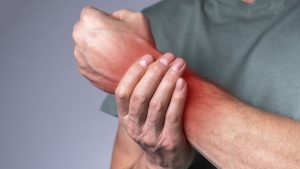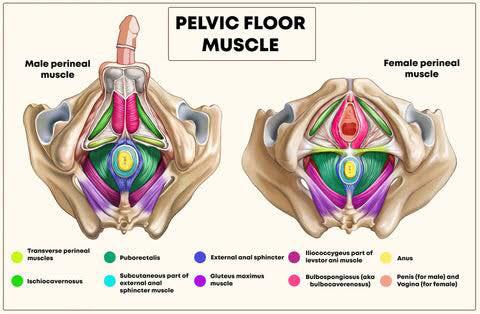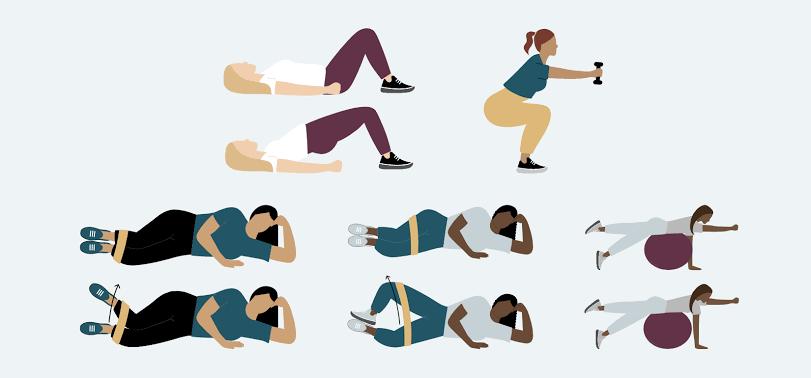
Understanding Wrist Pain and How Physical Therapy Can Help
Wrist pain is a common issue that affects people of all ages and activity levels. Whether it stems from repetitive strain, an acute injury.
January, 2025

The pelvic floor might not be a part of the body you think about often, but it plays a crucial role in your overall health and well-being. This group of muscles, ligaments, and connective tissue is essential for core stability, bladder and bowel control, sexual function, and even posture. Whether you’re an athlete, a new parent, or simply curious about anatomy, understanding your pelvic floor is key to better health.
The pelvic floor is a hammock-like structure located at the base of the pelvis. It is made up of several muscles, including the pubococcygeus, iliococcygeus, and puborectalis, which collectively form the levator ani group, as well as the coccygeus muscle. These muscles stretch between the pubic bone at the front of the pelvis, the tailbone (coccyx) at the back, and the sitting bones (ischial tuberosities) on either side.
Together, these muscles create a supportive sling that:
Holds your pelvic organs (bladder, uterus or prostate, and rectum) in place.
Maintains continence by controlling the opening and closing of the urethra and anus.
Supports sexual function and pleasure.
Works with your abdominal and back muscles to stabilize your core and maintain good posture.
A healthy pelvic floor is vital for daily activities, athletic performance, and long-term wellness. However, this area can become weakened or overly tight due to factors like pregnancy, childbirth, aging, chronic coughing, heavy lifting, or prolonged sitting. Issues with the pelvic floor can lead to symptoms such as:
Urinary or fecal incontinence.
Pelvic organ prolapse (when organs shift out of their usual position).
Pain during intercourse or chronic pelvic pain.
Lower back or hip discomfort.
How to Strengthen and Relax Your Pelvic Floor

Maintaining pelvic floor health involves a balance between strength and flexibility. Here are a few tips to help you care for this essential group of muscles:
Kegels are a popular and effective way to strengthen the pelvic floor. To perform a Kegel:
Identify your pelvic floor muscles by stopping the flow of urine midstream (this is just for identification and not a regular exercise).
Squeeze and lift these muscles as if trying to stop urine flow or hold in gas.
Hold for 5-10 seconds, then relax for the same amount of time.
Repeat 10-15 times, 2-3 times a day.
An overly tight pelvic floor can be just as problematic as a weak one. Practice diaphragmatic breathing to relax your pelvic floor:
Sit or lie down in a comfortable position.
Inhale deeply through your nose, allowing your abdomen and pelvic floor to expand.
Exhale slowly, releasing any tension in the pelvic area.
If you experience persistent symptoms, consider visiting a pelvic floor physical therapist. These specialists can assess your pelvic floor and create a customized plan to address your needs.
When to See a Pelvic Floor Physical Therapist
It’s time to consult a professional if you notice any of the following:
Difficulty controlling your bladder or bowels.
Pain in the pelvic area, hips, or lower back.
Discomfort or pain during sexual activity.
A sensation of heaviness or bulging in the pelvic area.
Pelvic floor physical therapists use a combination of manual therapy, biofeedback, exercises, and education to help you regain strength, flexibility, and function.
Understanding and caring for your pelvic floor muscles can have a profound impact on your quality of life. Whether you’re recovering from childbirth, dealing with chronic pain, or simply looking to optimize your core strength, paying attention to this often-overlooked area is a step in the right direction.
At Go Physical Therapy, we specialize in helping you achieve and maintain pelvic floor health. Our team of experts is here to guide you every step of the way.

Wrist pain is a common issue that affects people of all ages and activity levels. Whether it stems from repetitive strain, an acute injury.